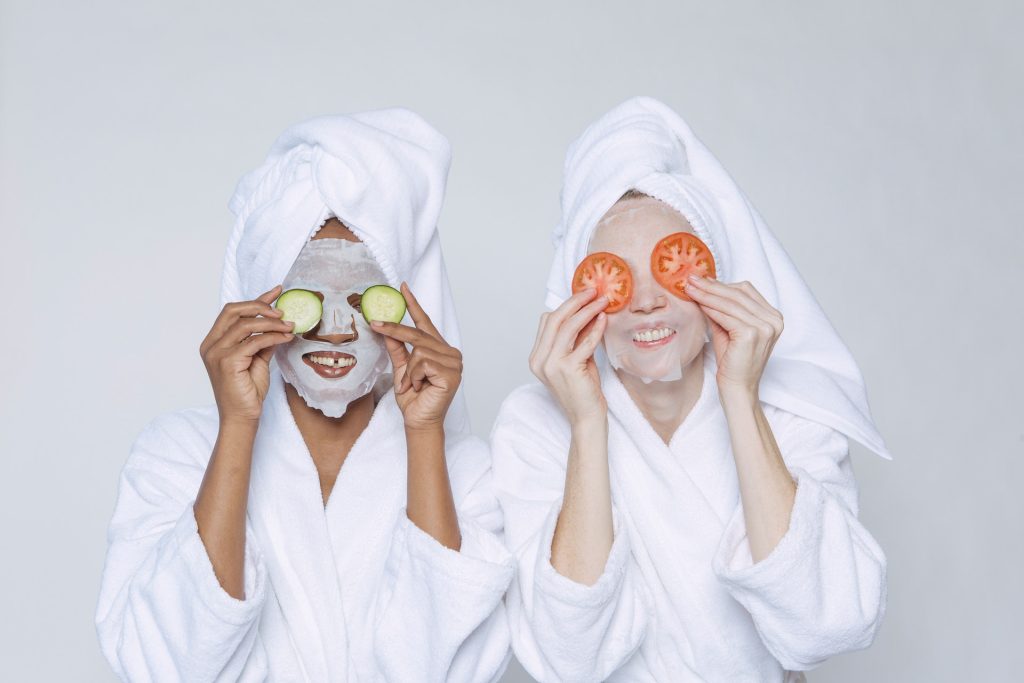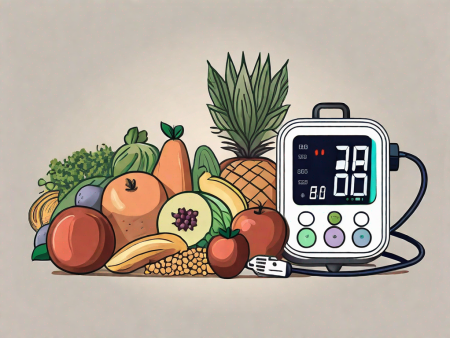Discover the impact of sun exposure on wrinkles and learn how to protect your skin from harmful UV rays.
How Sun Exposure Affects Wrinkles

We all love basking in the warm embrace of the sun. It gives us that beautiful bronzed glow, a boost of vitamin D, and a whole lot of good vibes. But did you know that those rays of sunshine can also accelerate the aging process, leading to dreaded wrinkles? Yes, my friend, the sun’s love is a double-edged sword. Let’s dive into the science of how sun exposure affects wrinkles.
Understanding the Science of Skin Aging
Before we delve into the nitty-gritty, let’s grasp the bare bones of skin aging science. Our skin is made up of a protein called collagen and another called elastin. Collagen keeps our skin firm and supple, while elastin allows it to stretch and bounce back without sagging. Think of them as the dynamic duo of youth.
Unfortunately, as we age, our bodies produce less collagen and elastin. Combine that with the gradual loss of fat underneath the skin and the pull of gravity, and voila – hello, wrinkles! But hold on, the sun’s involvement in this aging equation is not to be underestimated.
The Role of Collagen and Elastin
Collagen and elastin work hand in hand to keep our skin looking fresh and fabulous. Collagen provides structural support, while elastin gives our skin its elasticity. Together, they form a strong foundation, preventing fine lines and wrinkles from making an unwelcome appearance on our faces.
If our skin were a building, collagen would be the sturdy bricks, and elastin would be the flexible mortar that holds it all together. But when the sun enters the picture, things start to crumble.
How UV Rays Accelerate Skin Aging
Meet the dynamic troublemakers called UVA and UVB rays. These little rascals are part of the sun’s UV radiation, and they are relentless in wreaking havoc on our delicate skin. UVA rays have longer wavelengths and can penetrate deep into the dermis, while UVB rays are shorter and primarily damage the outermost layer of the skin, the epidermis.
When these UV rays penetrate our skin, they break down collagen and elastin. Imagine a bulldozer going through a beautifully constructed sandcastle – that’s what these rays do to our skin’s structure. Gradually, the damage accumulates, resulting in sagging, wrinkled skin that’s desperately in need of a collagen boost.
But let’s take a closer look at UVA rays. These sneaky rays are responsible for a process called photoaging. When UVA rays penetrate deep into the dermis, they trigger the production of harmful free radicals. These free radicals are like tiny molecular saboteurs, wreaking havoc on our skin cells and causing oxidative stress.
Oxidative stress is like a wildfire raging through a forest. It leads to inflammation, DNA damage, and the breakdown of collagen and elastin. The result? Premature aging, with fine lines, wrinkles, and uneven skin tone becoming more prominent.
UVB rays, on the other hand, may not penetrate as deep as UVA rays, but they are no less damaging. These rays are responsible for sunburns and play a significant role in the development of skin cancer. When UVB rays hit the skin, they cause immediate damage to the DNA in our skin cells, leading to mutations that can result in skin cancer over time.
So, while UVA rays are the silent assassins, slowly breaking down our skin’s structure, UVB rays are the immediate troublemakers, leaving behind painful sunburns and increasing the risk of skin cancer.
But wait, there’s more! The sun’s harmful rays not only damage collagen and elastin but also affect the production of another essential component of youthful skin – hyaluronic acid. Hyaluronic acid is a naturally occurring substance in our bodies that helps retain moisture, keeping our skin plump and hydrated.
When exposed to UV radiation, our skin’s ability to produce hyaluronic acid is compromised. This leads to dryness, dullness, and a loss of that coveted youthful glow. Without enough hyaluronic acid, our skin becomes more susceptible to fine lines, wrinkles, and a lackluster appearance.
So, as you can see, the sun’s involvement in skin aging goes beyond just damaging collagen and elastin. It affects multiple aspects of our skin’s health and vitality, leaving behind a trail of wrinkles, sunspots, and other signs of premature aging.
The Connection Between Sun Exposure and Wrinkles
Now that we understand the sneaky tactics of those UV rays, let’s explore how sun exposure links to the formation of wrinkles.
When it comes to sun exposure, it’s important to know that not all rays are created equal. There are two types of ultraviolet (UV) rays that we need to be aware of – UVA and UVB rays.
The Impact of UVA and UVB Rays
UVA rays, also known as the “aging rays,” are the primary culprits behind those fine lines and wrinkles. These rays have a longer wavelength, allowing them to penetrate deep into the skin. As they make their way through the layers, they break down collagen and elastin over time, which are the proteins responsible for keeping our skin firm and elastic.
On the other hand, we have UVB rays, often referred to as the “burning rays.” These rays have a shorter wavelength and primarily affect the outermost layer of our skin. When we spend too much time in the sun without protection, these rays can cause sunburns, redness, and inflammation. But that’s not all – they also contribute to the breakdown of collagen and elastin, further accelerating the formation of wrinkles.
So, each time we step out into the sun without protection, we’re essentially sending an invitation to wrinkles, asking them to dance all over our faces. But hey, we are not gonna let that happen without a fight.
The Cumulative Effect of Sun Damage
Here’s the kicker – the damage caused by sun exposure is cumulative. That cute little sunburn you had when you were 16? It may seem like a distant memory, but your skin remembers every single sunburn it’s ever had. Each time you exposed your skin to those harmful UV rays, you were contributing to the wear and tear of collagen and elastin.
Think of it like your favorite pair of jeans. The more you wear them, the more they’ll fade and lose their original shape. Your skin works in a similar way, only it’s much harder to find a replacement pair of skin jeans, right?
But it’s not just the visible damage that accumulates over time. The effects of sun exposure can also manifest in the form of dark spots, uneven skin tone, and rough texture. These are all signs that your skin has been battling the harmful effects of UV rays for years.
Moreover, the damage caused by sun exposure doesn’t stop at the surface. It can also affect the deeper layers of your skin, leading to the breakdown of essential proteins and the development of free radicals. These free radicals are highly reactive molecules that can cause oxidative stress, leading to further damage and premature aging.
So, as much as we love soaking up the sun and enjoying its warmth, it’s crucial to protect our skin from its harmful rays. Applying sunscreen with a high SPF, wearing protective clothing, and seeking shade during peak sun hours are all effective ways to minimize the risk of wrinkles and other sun-related skin issues.
Remember, prevention is key when it comes to maintaining youthful and healthy-looking skin. By taking proactive steps to shield your skin from the sun’s damaging effects, you’ll be able to enjoy the outdoors while keeping wrinkles at bay.
Preventing Sun-Induced Wrinkles
Now that we know the dark secrets of sun exposure, how can we protect our skin from becoming a roadmap of wrinkles? Here are a few tips to ensure your skin stays youthful and wrinkle-free for as long as possible.
Importance of Sunscreen in Skin Care
Never underestimate the power of sunscreen. It’s like having a protective forcefield for your skin – the ultimate defense against those pesky UV rays. Slather on a broad-spectrum sunscreen with at least SPF 30 every day, rain or shine. Be sure to cover every exposed area, including your face, neck, and even those often-neglected hands.
Remember, sunscreen is your new best friend. Trust me, it’s a small price to pay to keep those wrinkles at bay.
Protective Clothing and Accessories
While sunscreen is a superhero, it never hurts to have backup. When the sun is shining its brightest, arm yourself with protective clothing and accessories. Long-sleeved shirts, wide-brimmed hats, and sunglasses with UV protection are your fashionable allies.
Think of yourself as a stylish undercover agent, infiltrating the sunny streets with your fashion-forward armor. Plus, extra points for looking effortlessly chic while keeping those wrinkles at bay!
Treating Sun-Damaged Skin
Okay, so let’s say you may have slipped up in the past and let those UV rays have their way with your skin. Fear not, the battle is not lost. There are ways to treat sun-damaged skin and improve its texture and appearance.

Over-the-Counter Remedies
Your local drugstore might just be the gateway to rejuvenating your sun-kissed skin. Look for skincare products containing ingredients like retinol, hyaluronic acid, and antioxidants. These powerhouse ingredients can help stimulate collagen production, plump up your skin, and fade those pesky sunspots.
Your skin will be singing “I Will Survive” as it bounces back and repairs itself, thanks to your newfound skincare allies.
Professional Treatments for Sun Damage
If you’re seeking a more intensive approach, it’s time to call in the professionals. Treatments like laser resurfacing, microdermabrasion, and chemical peels can work wonders in reversing the effects of sun damage. They exfoliate dead skin cells, stimulate collagen production, and leave you with a fresh canvas.
Say hello to a little post-treatment redness, but bid farewell to those stubborn wrinkles. With the right professional touch, your skin will be singing “I’m Coming Out” in no time.
The Myth and Reality of Tanning
Now, let’s address the elephant-sized myth – the idea that a tan is a sign of health and vitality. Unfortunately, my fellow sun worshippers, this notion couldn’t be further from the truth.
The False Notion of a Healthy Tan
Newsflash: Tanning is not a sign of health; it’s a sign of skin damage. When our skin darkens due to sun exposure, it’s actually a protective response to shield our DNA from further harm. Think of it as your skin’s way of donning a portable umbrella while shouting, “I need protection, stat!”
So, that golden tan might look glorious in the mirror, but it’s a false advertisement – a temporary disguise for long-term damage beneath the surface.
The Dangers of Tanning Beds
And don’t even get me started on tanning beds. While some might consider them a gift from the heavens, they are nothing short of a slow-motion time bomb for your skin. Tanning beds emit UVA and UVB rays, providing a concentrated dose of skin-damaging radiation.
Remember, wrinkles are not a souvenir worth collecting from your indoor tanning adventures. Protect your skin, my friend, and opt for a safer glow.
The Sun’s Love, Served with Caution
Ah, the sun, our most fickle lover. While it brings warmth, joy, and a radiant glow, it also has a mischievous side. By understanding how sun exposure affects wrinkles, we can better protect our skin from its harmful clutches.
So, embrace your sunscreen, don your fashionable protective gear, and treat your skin with the love and care it deserves. Remember, prevention is key, but there’s always hope for redemption with the right treatments.
No need to banish the sun from our lives – let’s just serve it with a side of caution. Cheers to sun-kissed skin without the unwelcome surprise of wrinkles!






